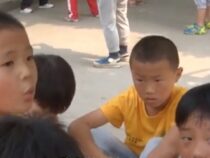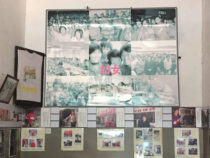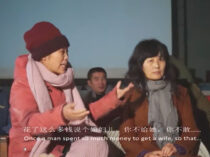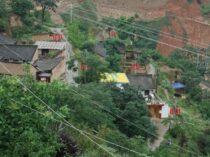Book Review: The Art of Activism and the Activism of Art, by Gregory Sholette
Book Review: The Art of Activism and the Activism of Art by Gregory Sholette (London: Lund Humphries, 2022)Alex Nicholls “The art of activism and the activism of art no longer simply intersect, instead, they increasingly double one another.” [1] In this quote from artist Gregory Sholette’s new book: The Art of Activism and the Activism of Art, a critical thematic thread of the text is established, that is, activist art as a continually evolving, yet ultimately regenerative entity. Providing a roughly chronological history of largely U.S./western-focused practices, each chapter provides a holistic perspective in highlighting the overlapping and shifting influence of the trajectory of activist art through time. One of the key initial points that Sholette makes is differentiating socially-engaged/activist art from art history, or rather the world of ‘high art’ as we think of it in relation to traditional modes of artistic production. The primary differentiation between these two realms, he notes, is the unyielding focus of activist artists toward agitation and protest as their artistic media, as well as collaborative processes; all of which can also draw from conventional artistic strategies and forms, giving activist artists the ability to “operate both within and beyond the beleaguered fortress that is high culture or the “art world”.’ [2] For instance, in a chapter aptly titled, “Escaping the Long Greenbergian Shadow,” he points out how the traditional tenants of western modernism [formalism, medium specificity, etc.] expressed by critic Clement Greenberg have historically excluded politically-oriented work for not being “advanced art.” [3] Sholette also ironically identifies, however, that the political associations present in activist art today are what give it a certain legitimization—a notable reversal in the allocation of artistic merit and value over time. A critical aim of this chapter that is upheld throughout text is also how different methodologies of socially-engaged and activist art have been sustained through time. These varied methods include those that exist within the art world proper, and those that alternately use aesthetic strategies to make sociopolitical statements— the latter of which has continued to thrive outside of the formal institutions of the art world, and within social movements where autonomy and radical aesthetics are no longer of paramount concern. There are other key thematic throughlines that are further brought into perspective as the text develops, including why activist art has (and continues to) gained renewed visibility, its specific distinction(s) from non-artistic political activism, and how the artistic labor that is created within the bounds of activist art has been apprehended in the broader context of mainstream art history. To begin addressing and unfolding these questions, Sholette introduces various overlapping historical strategies of activist art, made visible through specific examples and case studies, and the regeneration of social phenomena that has followed. For instance, the initial chapters outline the emergence of Situationist International (SI), [4] positioning the group as a critical progenitor of activist strategies through their use of the aesthetics of capitalism as a totalizing spectacle, engagement with radical protest during the student and worker uprisings of May 1968 in Paris, and their renewed legacy following the defeat of the New Left that same year. The SI’s focus on the liberation of creativity through tactics of appropriation and subversion, called “détournement” (or hijacking), used consumerist culture to demolish the status quo that disproportionately targeted women, people of color, counterculture, and any group or movement that did not align with the metanarrative of capitalism. Sholette notes that for contemporary activists, these spaces of “negation and rupture” [5] are the only possible locales where radical politics can continue to thrive. Given capitalism’s continued aesthetic triumph through history, how then has this particular moment set the stage for new iterations of activist art? And this is the question that Sholette ultimately seeks to address, drawing from the practices of numerous other activist groups, such as Tucumán Arde, Grupo de Artistas de Vanguardia, the Art Workers’ Coalition, and PAD/S (to name a few) as examples of how artists and activists alike have sustained and transformed this legacy in varying ways. In chapter 5, titled “1968 and After: The Phantom Archive of Social Movement Culture,” Sholette makes a notable transition to more ‘contemporary’ activist aesthetics and strategies. It is also throughout the latter half of the book that he begins to circle back to the various histories that he had introduced in the early chapters, including highlighting the points of overlap that exist between the regenerative histories of activist art associated with the early tactics of the SI. For example, he begins with identifying the “phantom archive:” materials with underlying codes that have been fashioned by art activists, yet largely excluded from historical record, as the primary visual language of contemporary activist aesthetics, which includes ephemera such as protest banners and signage. The transitory nature of this material, Sholette argues, is also something that has worked against activist art’s recognition and preservation in the art world, but paradoxically has also been absorbed into fine art through the adoption of strategies such as didacticism, institutional critique, and uses of social protest imagery, which have also resurged within contemporary activism. In the following chapters, he also outlines how modern technological development and new and updated strategies of resistance have further aided in the accessibility and distribution of political aesthetics. Specific movements such as the Neoliberal Turn led artists and activists to adopt tactics of more low-key resistance that filtered into the spaces of everyday life rather than mass platforms— a shift that also repurposed the SI’s practice of détournement to carry out subversive acts of sabotage— and the Educational Turn in Art of the 1990s that emphasized collaborative and research-based practices over actual object production. Furthermore, the emergence of Tactical Media that emphasized more ‘temporary’ interventions into mass media allowed for more immediate action rather than long-term planning. And while Sholette identifies various inconsistencies with some of these strategies and the trajectory of activist art production, the notion that there is an interconnected web between these various moments and histories remains central. One of the key takeaways from the text is how our contemporary cultural climate has become a progenitor of renewed interest in activism and social justice. Sholette attributes this to various sociopolitical events, including an increasing resurgence of capitalist policies (some of which even appropriate similar tactics used by leftist groups), the terrorist attacks of 9/11, various public assaults on a global scale, the 2008 U.S. recession, ongoing struggles for equitable wages for art workers, and even more recent events, such as the global COVID-19 pandemic, and the murder of George Floyd at the hands of police in Minneapolis, Minnesota in May of 2020. Also established in these later chapters is the connection that exists between violence and aesthetics that relates to a politics of visibility in contemporary activism. Using the Black Lives Matter movement as a primary example of this, he explains how the movement’s refusal to follow the historical policing of images of non-white peoples to exhibit an “optics of a disciplinary society that depends upon orderly maintenance” [6] functions as a visual act of defiance and protest. While the book as a comprehensive analysis of the lineage of activist art seamlessly establishes its trajectory, there remains a few pitfalls in terms of how it relates to the more ‘big picture’ ideas that it concerns. For instance, in his concluding comments, Sholette mentions that in terms of contemporary art activism, there appears to be a collective desire to ‘move away’ so to speak from western/Eurocentric institutions and thinking, yet many of the foundational arguments, theories, and concepts presented throughout the text stem from Eurocentric perspectives. And although clearly focused on western activist art, the examples that fall outside of this scope that are threaded into the book at various points often lack the necessary sociocultural support within this greater narrative. Additionally, while the text does an impeccable job of encapsulating and linking together several decades of activist art production, many concepts and examples presented in the chapters are abbreviated—an almost inevitable result of taking on such a complex and layered history, but it still leaves the reader with several questions regarding the details of these points beyond surface level, leaving a bit to be desired in the greater chronology. Despite these conundrums, however, Sholette manages to provide a well-crafted, comprehensive, and well-thought-out trajectory of western activist art that is not only deeply engaging, but maintains a critical insight and unique perspective throughout. Overall, there appears to be two primary outcomes garnered from the text: first, the history of activist art is undoubtedly a recurring one, through which different contexts and parameters emerge through time, and where the conditions of a particular ‘present’ play a major role in how this history is carried out. And second, our current moment of activism is not only the most recent phase in this history, but according to Sholette, it is also the most puzzling due to the specific overlaps and contradictions that it has produced. For instance, in the final chapter, he references artists in Kyiv who are pictured helping troops make steel barricades following the Russian attacks on Ukraine— a poignant and timely example of how the separation of art and activism has become increasingly more difficult to discern. Examples such as this have also, as Sholette continues to point out, set new bars for protest models and activist aesthetics, thus further probing the line between the role of ‘activist’ and ‘artist,’ and obscuring where both merge and diverge. This question of what distinguishes artist and activist has only become more muddled in our present moment, where new forms of spectacle emerge in strange forms of eternal return, [7] continuing to interrogate how we collectively define what ‘art’ is, and where it ceases to exist as such. Rather than making decisive assertions as to what activist art is or will become, Sholette instead offers thoughtful observations on its historical foundations and evolving contemporary iterations. Alex Nicholls is a doctoral candidate in art history, theory and criticism at the University California, San Diego, and a contributing editor to FIELD. Her research interests are centered on the lineage of American contemporary art, with attention to issues of gender and identity as they coincide with materiality and methodology. Her dissertation research is about the work of Mike Kelley, placing his practice in dialogue with practices of Pop and other historical and contemporary uses of popular culture in artistic production. Alex received her BA in art history from UCLA in 2016. She has held positions at various museums and institutions, including the Solomon R. Guggenheim Museum in New York City and the Hammer Museum, where she assisted in the organization of the first North American retrospective of artist and activist Jimmie Durham. As curatorial assistant at the Institute of Contemporary Art, Los Angeles, she organized the first solo Los Angeles museum presentation of Oakland-based artist Sadie Barnette. Notes [1] Gregory Sholette, “2016 and After: Winter Is Coming/Winter Is Here,” The Art of Activism and the Activism of Art, 123. [2] Lucy R. Lippard, “Trojan Horses: Activist Art and Power,” Art after Modernism, Rethinking Representation. Quoted by Sholette in chapter 1. [3] Term by Theodor Adorno. [4] The Situationist International was a European organization of artists, intellectuals, and sociopolitical theorists, led by Guy Debord. The group was deeply critical of consumer culture, labeling it as the “society of the spectacle.” [5] Gregory Sholette, “The Situationists’ Total Critique, and Total Cure.” The Art of Activism and the Activism of Art, 30. Drawing from the theory of Jaques Rancière. [6] Following Fred Moten’s theory that Black political resistance refuses to serve as an “other,” p. 137. [7] Term borrowed from Friedrich Nietzsche’s theory that posits that the universe, its existence, and energy, has been recurring, and will continue to recur in a similar form an infinite number of times across infinite time or space. |










